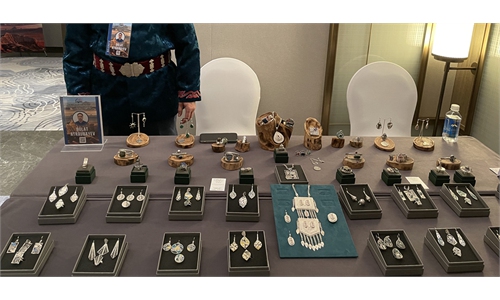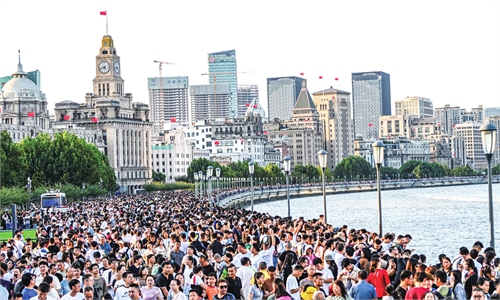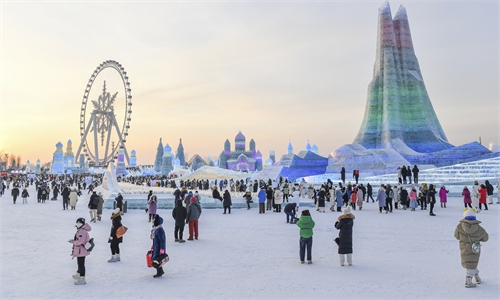ARTS / CULTURE & LEISURE
How non-traditional tourist destinations rise to fame

Illustration: Liu Xiangya
This past year, some non-traditional tourist cities have taken leading roles in the tourism market. Zibo barbecue, Shenyang bathing culture and Harbin's hospitality have become internet phenomenon, attracting a large number of tourists. During the three-day New Year's Day holidays, Harbin, capital of Northeast China's Heilongjiang Province, received a total of 3.048 million tourists, with a total tourism revenue of 5.91 billion yuan ($832 million), reaching a historical peak and quadrupling that of Sanya, a popular winter tourist site in South China's Hainan Province.
So, what are the reasons behind their success?
First, the tourism market has recovered. Since Spring Festival 2023, the recovery momentum has remained robust. According to data from the Ministry of Culture and Tourism, in the first three quarters of 2023, the total number of domestic tourists reached 3.674 billion, an increase of 1.58 billion compared to the same period of 2022 and a year-on-year increase of 75.5 percent. Young people have gradually become the main force. These youngsters, represented by Generation Z, pursue the integration of their own personality and group identity when they choose travel destinations and they tend to value much more local life experiences, which have given rise to internet-famous sites and cuisine tours.
Second, sensory experiences and interactive participation activities also contributed. The former enhanced the immersive experience of tourists, while the latter increased the popularity of the tourist destinations. College students, the central pillar of tourism, shared their experiences and offered tips for having a barbecue in Zibo on social media, which made the former industrial base in East China's Shandong Province quickly become a star spot last year. The continuous online sharing and interaction kept up the heat and present a more vivid image of the city, increasing credibility and intriguing potential tourists.
Third, cooperation among multiple parties and positive emotional feedback paid off. Sophisticated services resulted from the joint efforts of the government agencies, social forces, and local residents. The government played a proactive role and responded effectively to the rising demand from tourists. Comprehensive supporting measures and other efforts by local governments made travel more convenient and, more importantly, it reflected the respect and value for tourists who indeed felt the warmth and sincerity from the service-oriented local governments. The provincial government of Zhejiang in East China has been a good example from the past two decades. Its success came down to nothing more than creating a sound business environment, maintaining respect for procedures, and adhering to people-centered policymaking.
Increasingly, tourism is getting closer to daily life, forming a new consumption space, which reflects the strong driving force of tourism consumption and helps shape a unique city image. From the unexpected prevalence of these non-traditional tourist cities, we can come up with some advice that other localities can use as reference.
To begin with, we should do an excellent job in urban governance and explore more affluent lifestyles, because nowadays, in addition to beautiful scenery, special life experiences, amiable environments, and a pleasant social atmosphere are of greater concern to more and more people. Therefore, we should create a comfortable urban living space through proactive governance measures and deeply integrate them with local cultures to explore unique lifestyles.
Next comes pinpointing a location's unique selling point and utilizing social media to achieve viral online marketing. On one hand, we can take the initiative by inviting internet celebrities to attract internet traffic. On the other hand, we should use mainstream media's leading role in promotion to strengthen the selling point.
Last but not least, we must value interactive experiences. The government should formulate policies, set up platforms, and implement regulations to guide and promote the optimization and high-quality development of the industry. During this process, administrative departments should actively communicate with residents and tourists, meet their requirements within reason, and encourage them to participate in urban brand building. Accordingly, business runners must adhere to honest management and cooperate with industry associations under government guidance to build brands and form a strong sense of collective honor. They must serve and interact with tourists sincerely as joint efforts and true feelings from all walks of life touch the hearts of tourists and win their favor. In return, they will show their appreciation and share their experiences, becoming co-creators of tourism promotion.
Harbin, usually an icy city in winter, has become "hot" now. How to maintain its accumulated reputation and keep tourists coming back remain a concern for Harbin and other cities as tourism waves tend to calm down, especially those seasonal sensational hot spots.
From Zibo in summer to Harbin in winter, each of these phenomenal tourism booms appeared to have been random happenstance. But in reality, they have turned out to be the result of sophisticated planning and accumulated joint efforts. Above all, sincerity and hospitality are always the greatest strengths when it comes to tourism.
The author is a faculty member with the School of Applied Economics, Renmin University of China





